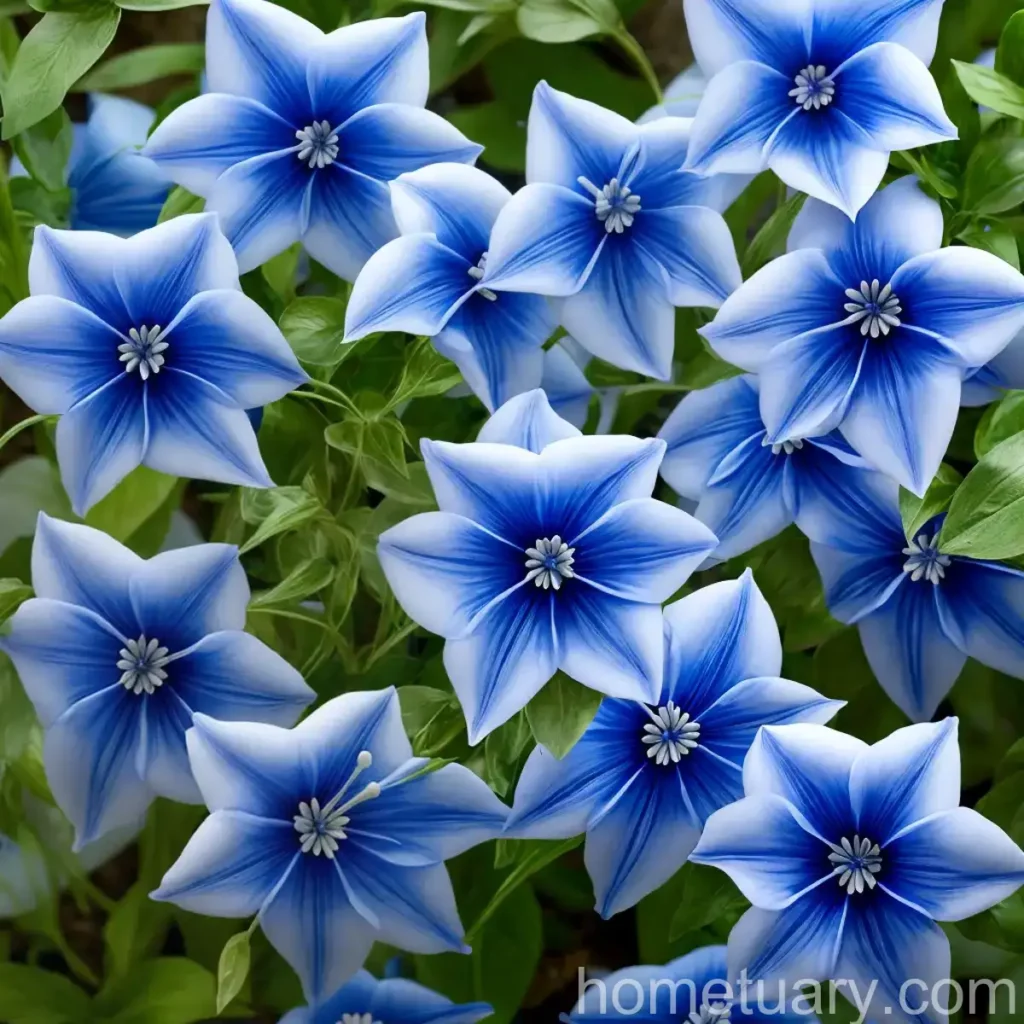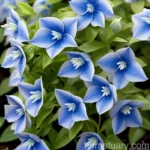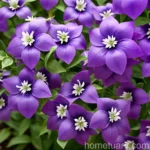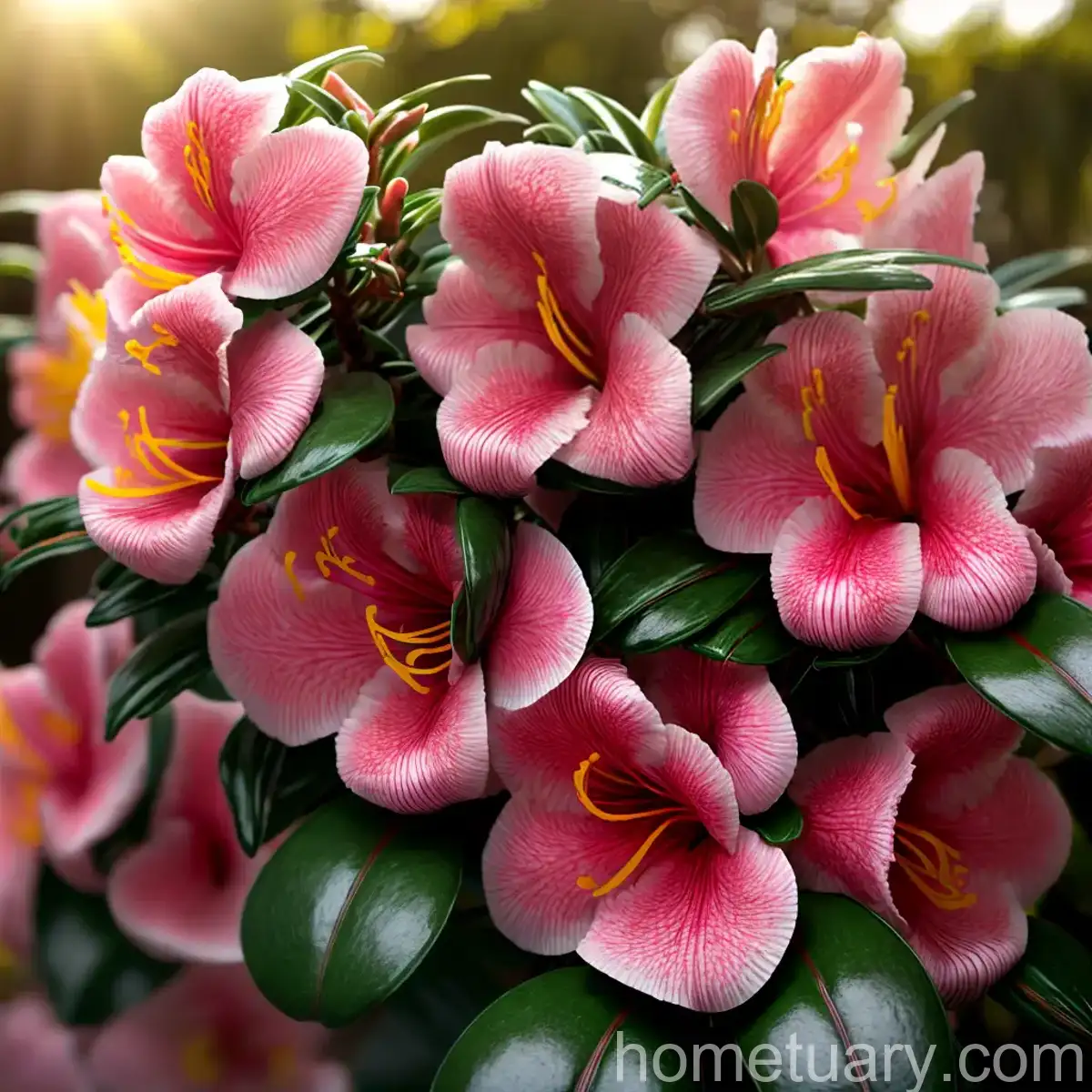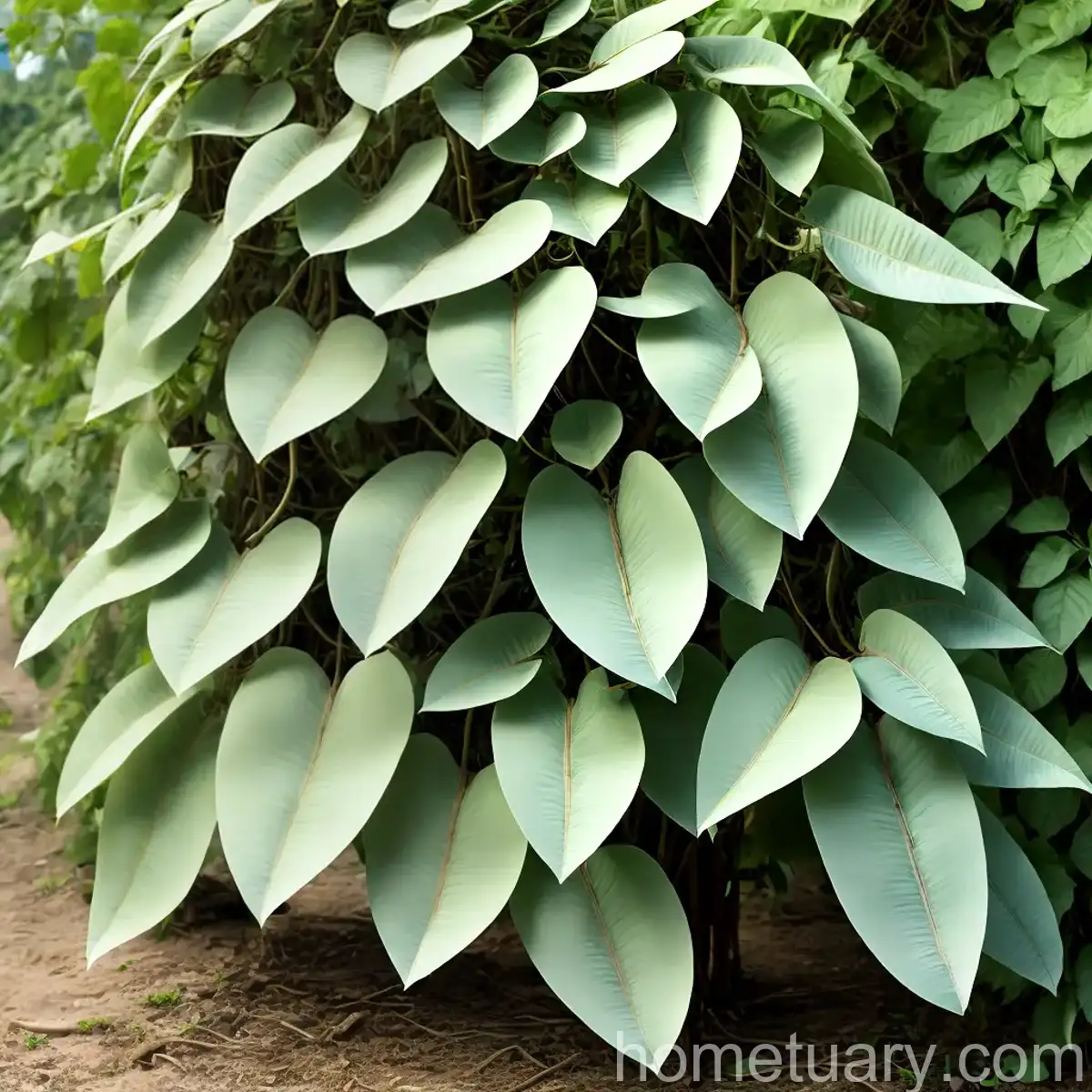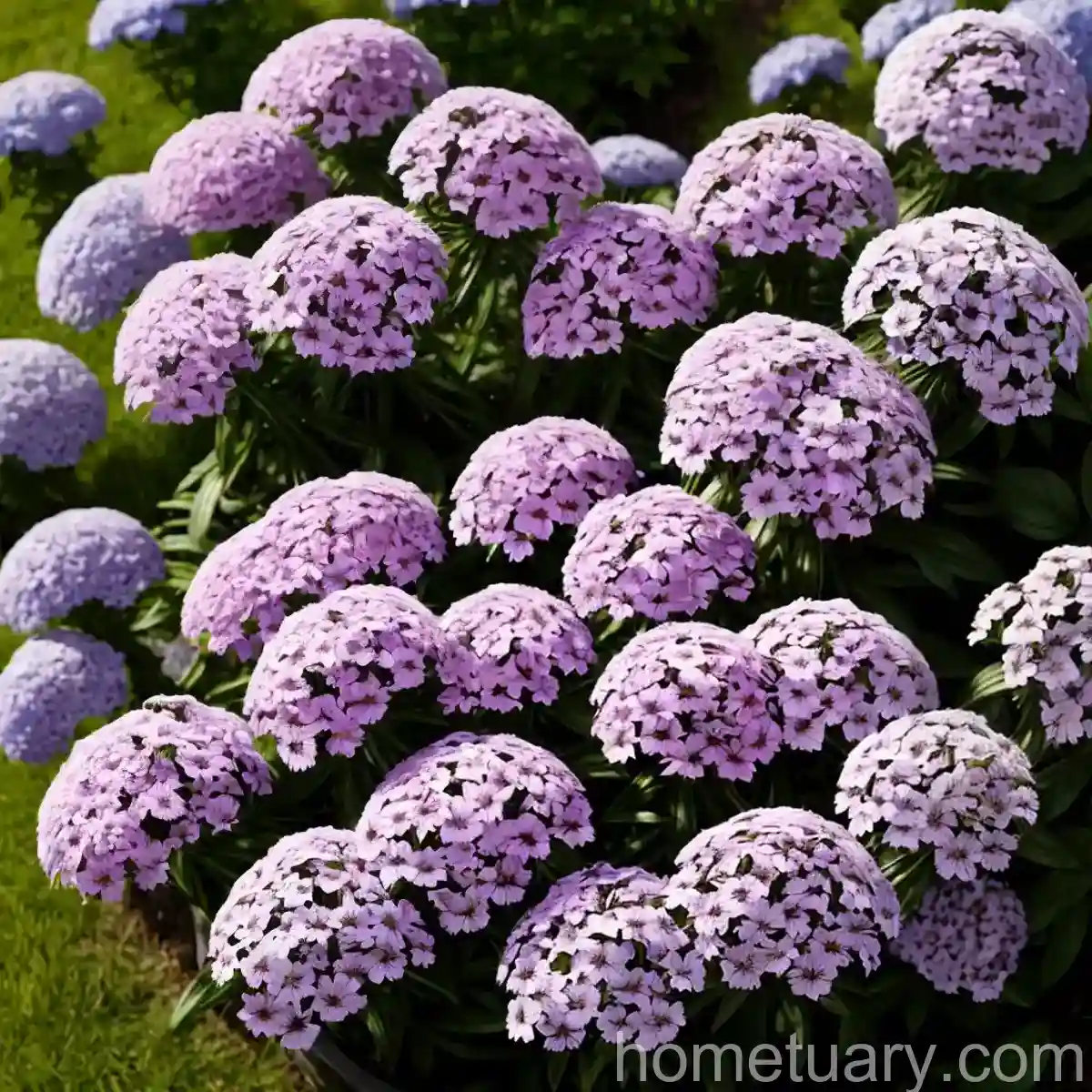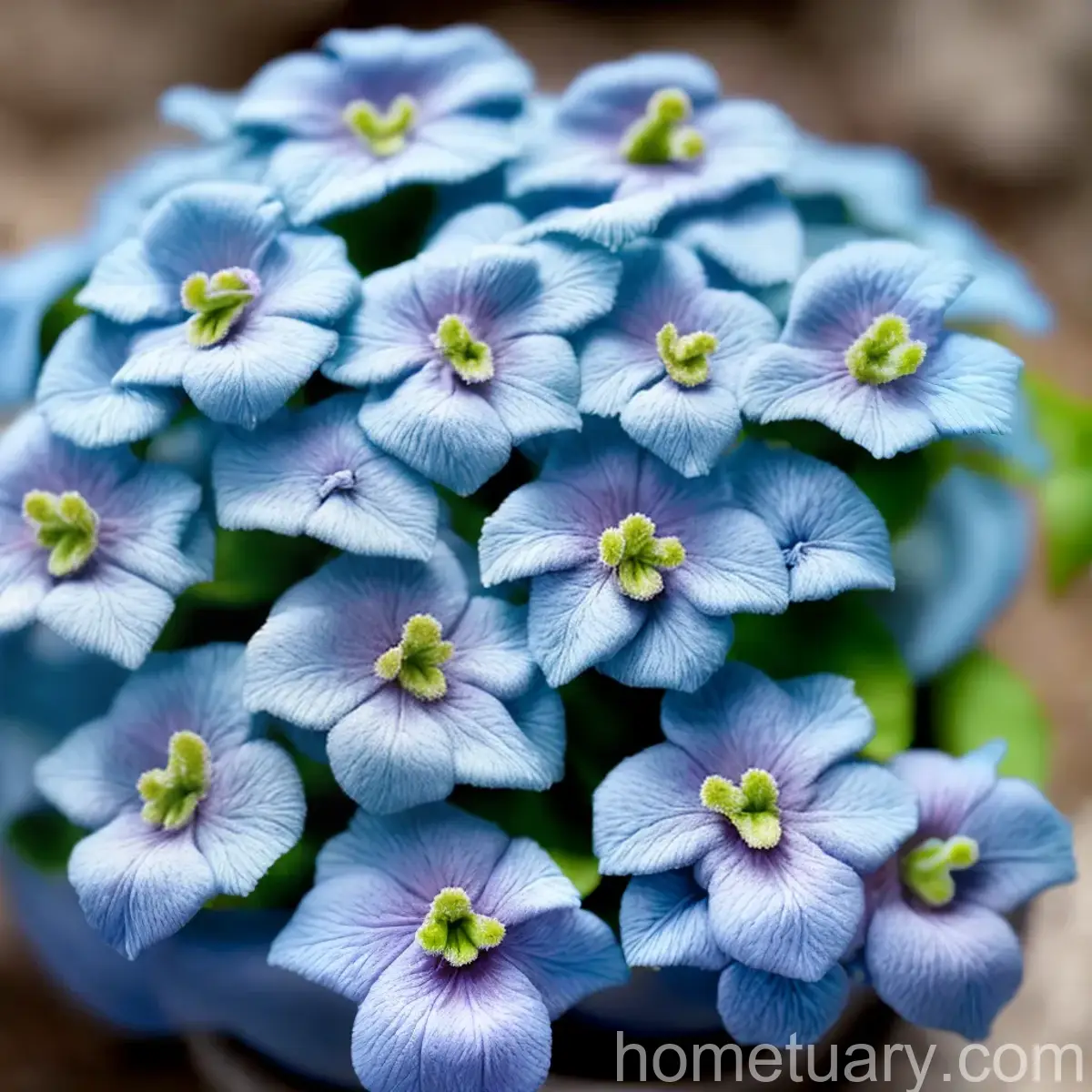All You Need to Know About Balloon Flower (Platycodon grandiflorus ‘Sentimental Blue’)
What is a Balloon Flower (Platycodon grandiflorus ‘Sentimental Blue’)?
Balloon flower (Platycodon grandiflorus ‘Sentimental Blue’) is a stunning perennial plant that is native to East Asia. It is valued for its unique balloon-like flower buds that swell up before opening into star-shaped blossoms. The ‘Sentimental Blue’ variety is particularly beloved for its vibrant blue flowers, adding a splash of color to any garden or landscape. Renowned for its low maintenance and long-lasting blooms, this plant has become a favorite among gardeners and landscape enthusiasts. Balloon flower thrives in a variety of settings, from garden beds to containers, making it a versatile and popular choice for both beginners and seasoned gardeners.
In this comprehensive guide, we will explore various aspects of the balloon flower (Platycodon grandiflorus ‘Sentimental Blue’), including its care, uses, and characteristics, to help you cultivate and appreciate this stunning plant to the fullest.
Key Takeaways – Balloon Flower (Platycodon grandiflorus ‘Sentimental Blue’)
Before we delve into the details, here are the key takeaways of this guide on balloon flower (Platycodon grandiflorus ‘Sentimental Blue’):
-
Cultivation: Balloon flower (Platycodon grandiflorus ‘Sentimental Blue’) can thrive in a variety of settings, from garden beds to containers, and provides beautiful blue, star-shaped blooms.
-
Uses: It is a versatile plant that adds a pop of color to gardens and landscapes, and its long-lasting blooms make it a popular choice for both beginners and experienced gardeners.
-
Water: Balloon flower requires moderate watering, ensuring the soil remains moist but not waterlogged.
-
Sunlight: It thrives in full sun to partial shade, making it suitable for various light conditions.
-
Fertilizer: It benefits from a balanced fertilizer application in the spring to support healthy growth and abundant flowering.
-
Soil: Well-draining, fertile soil is essential for the successful cultivation of balloon flower.
-
Pruning: Regular deadheading and occasional pruning can help maintain the plant’s shape and encourage new growth.
-
Propagation: Balloon flower can be propagated through division or seeds, providing opportunities to expand your plant collection.
-
Container Popularity: Its compact size and striking blooms make balloon flower a popular choice for container gardening.
-
Common Diseases: While relatively low-maintenance, balloon flower may be prone to certain diseases, which can be managed with proper care and maintenance.
-
Common Pests: Pests such as aphids and slugs may occasionally target balloon flowers, requiring vigilant pest control measures.
-
Botanist’s Tips: Understanding the plant’s characteristics and growth habits can aid in creating an optimal environment for balloon flower cultivation.
Now, let’s explore each of these aspects in detail to provide you with all the knowledge you need to grow and enjoy the beauty of balloon flower (Platycodon grandiflorus ‘Sentimental Blue’).
Culture
Cultivating balloon flower (Platycodon grandiflorus ‘Sentimental Blue’) involves understanding its specific cultural requirements, including watering, sunlight, fertilizer, soil, and pruning. By providing the right conditions, you can ensure the plant thrives and produces beautiful, long-lasting blooms.
Water
Proper watering is essential for the health and vitality of balloon flower. While it is important to keep the soil consistently moist, it should never become waterlogged. Overly soggy conditions can lead to root rot and other issues, so it is crucial to strike a balance. Here are some tips for watering balloon flower:
-
Frequency: Water the plant deeply once or twice a week, depending on the weather and soil conditions.
-
Moisture Level: Check the soil moisture regularly, aiming for evenly moist soil without water accumulation.
-
Established Plants: Once established, balloon flower exhibits good drought tolerance but benefits from occasional deep watering during dry periods.
Sunlight
Balloon flower thrives in a sunny location, but it can also tolerate partial shade, making it adaptable to various light conditions. To ensure optimal growth and abundant blooms, here are some considerations for sunlight:
-
Full Sun: Provide at least 6 hours of direct sunlight daily for the best flowering performance.
-
Partial Shade: If full sun is not available, balloon flower can still thrive in partially shaded areas, though its bloom production may be slightly reduced.
-
Morning Sun: In hot or dry climates, providing morning sun and afternoon shade can help protect the plant from excessive heat and stress.
Fertilizer
Applying a balanced fertilizer can support the healthy growth and flowering of balloon flower. Consider the following guidelines for fertilizing this perennial plant:
-
Timing: Apply a balanced, all-purpose fertilizer in early spring as new growth emerges.
-
Application: Follow the recommended dosage and application instructions on the fertilizer label to avoid overfeeding.
-
Frequency: A single application in early spring should be sufficient to support the plant’s growth and flowering throughout the season.
Soil
The soil conditions play a crucial role in the overall health and performance of balloon flower. Optimal soil characteristics for cultivating this plant include:
-
Well-Draining: Ensure the soil has good drainage to prevent waterlogging, which can lead to root rot and other issues.
-
Fertile: Balloon flower thrives in moderately rich soil, so amending the soil with compost or organic matter can enhance its growing conditions.
-
pH Level: It prefers slightly acidic to neutral soil (pH 6.0-7.0), though it can tolerate a slightly broader range of pH levels.
-
Soil Type: While adaptable, loamy and sandy soils are generally preferred over heavy clay soils.
Pruning
Pruning is an essential aspect of maintaining the shape and vigor of balloon flower, as well as promoting continuous blooming. Here are some key considerations for pruning this plant:
-
Deadheading: Remove spent flowers regularly to encourage the development of new buds and prolong the blooming period.
-
Spring Pruning: In early spring, trim back any remaining foliage from the previous season to allow new growth to emerge.
-
Maintenance Pruning: Throughout the growing season, trim back any damaged or excessively leggy growth to maintain a compact and tidy appearance.
By paying attention to the cultural requirements of balloon flower, you can establish an environment that promotes healthy growth and abundant flowering, ensuring the plant thrives and provides visual delight in your garden or landscape.
Uses
The versatile nature of balloon flower (Platycodon grandiflorus ‘Sentimental Blue’) makes it suitable for various uses in garden landscapes, ranging from borders and containers to pollinator gardens. Let’s explore some of the common uses and applications of this stunning perennial plant:
-
Garden Beds and Borders: Balloon flower adds an eye-catching element to garden beds and borders, providing vertical interest with its unique balloon-like buds and vibrant blue flowers.
-
Container Gardening: Its compact size and long-lasting blooms make balloon flower a popular choice for container gardening, allowing you to enjoy its beauty on patios, balconies, and other outdoor spaces.
-
Pollinator Gardens: The nectar-rich blossoms of balloon flower attract pollinators such as bees and butterflies, contributing to the biodiversity and ecological value of the garden.
-
Cut Flowers: The long-lasting blooms of balloon flower make it a delightful addition to floral arrangements, bringing a touch of elegance and charm to indoor spaces.
-
Landscape Accents: Whether used as a focal point or interspersed within mixed plantings, balloon flower lends a captivating charm to various landscape settings.
-
Rock Gardens: Its adaptable nature and compact growth habit make balloon flower suitable for rock gardens, where it can thrive in well-drained, rocky soils.
-
Edging and Pathways: The low, mounding form of balloon flower makes it a great choice for edging garden pathways, adding a splash of color and visual appeal.
By considering the diverse uses of balloon flower, you can incorporate it into your garden or landscape design with creativity and purpose, enhancing the beauty and functionality of outdoor spaces.
Propagation
Propagating balloon flower (Platycodon grandiflorus ‘Sentimental Blue’) allows you to expand your plant collection and share its beauty with others. This perennial plant can be propagated through division or seeds, offering opportunities for multiplying and cultivating new specimens. Let’s explore the propagation methods for balloon flower:
Division
Dividing mature balloon flower plants is an effective way to create new individuals and rejuvenate existing clumps. Follow these steps for successful division:
-
Timing: Spring or early fall is the best time for dividing balloon flower, coinciding with the plant’s active growth periods.
-
Digging: Carefully dig up the entire plant, taking care to preserve the root system and as much soil as possible.
-
Separation: Gently tease apart the root mass, dividing it into smaller sections, each with a portion of the roots and foliage.
-
Replanting: Plant the divided sections in prepared soil at the same depth as the original plant, ensuring adequate spacing between new plantings.
-
Watering and Care: Water the newly divided plants thoroughly and provide ongoing care to support their establishment and growth.
Seed Propagation
Growing balloon flower from seeds is another viable method for propagation, providing an opportunity to cultivate new plants from scratch. Here’s how to propagate balloon flower from seeds:
-
Seed Collection: Collect mature seed pods from existing balloon flower plants after the flowers have faded and the pods begin to dry and split open.
-
Seed Preparation: Extract the seeds from the pod and store them in a cool, dry place until you are ready to sow them.
-
Sowing: Sow the seeds indoors in late winter or early spring, or directly in the garden after the last frost has passed. Lightly cover the seeds with soil and keep them consistently moist.
-
Germination: The seeds should germinate within 14-21 days, and seedlings can be transplanted into individual pots or garden beds once they have developed several true leaves.
-
Care and Growth: Provide the seedlings with adequate light, water, and nutrient-rich soil to support their healthy growth as they develop into mature plants.
By applying these propagation methods, you can expand your balloon flower collection and share the beauty of this perennial plant with others, contributing to the diversity and charm of garden landscapes.
Container Popularity
The compact size and striking blooms of balloon flower (Platycodon grandiflorus ‘Sentimental Blue’) make it a popular choice for container gardening. Whether placed on a patio, balcony, or outdoor living space, balloon flower adds a touch of elegance and color to container displays. Here are some key considerations for cultivating balloon flower in containers:
-
Container Selection: Choose a well-draining container that is slightly larger than the plant’s current root ball, allowing room for root growth.
-
Soil: Use a quality potting mix that provides good drainage and aeration, promoting healthy root development and overall plant vigor.
-
Watering: Monitor the moisture levels in the container, ensuring the soil remains evenly moist but not waterlogged.
-
Sunlight: Place the container in a location that receives adequate sunlight, typically at least 6 hours of direct sun per day for optimal flowering.
-
Fertilization: Apply a balanced, water-soluble fertilizer at the recommended intervals to provide essential nutrients for the plant’s growth and flowering.
-
Maintenance: Regular deadheading and occasional pruning can help maintain the plant’s shape and appearance in the container.
Cultivating balloon flower in containers offers the flexibility to enjoy its beauty in various outdoor settings, allowing you to create inviting and visually captivating displays.
Common Diseases
While generally low-maintenance, balloon flower may be susceptible to certain diseases that can impact its health and vitality if left unmanaged. Understanding the common diseases and their symptoms is essential for implementing timely interventions and preserving the plant’s well-being. Let’s explore some of the common diseases that may affect balloon flower:
Root Rot
-
Symptoms: Wilting, yellowing leaves, and stunted growth are common signs of root rot, which is caused by overly wet or poorly draining soil.
-
Management: Improve soil drainage and avoid overwatering to prevent the onset and spread of root rot. If detected, consider repotting the plant or addressing the underlying soil moisture issues.
Powdery Mildew
-
Symptoms: A powdery, white coating on the foliage indicates the presence of powdery mildew, which can gradually affect the plant’s overall health and appearance.
-
Management: Provide adequate air circulation, avoid overhead watering, and consider applying fungicidal treatments to manage and prevent powdery mildew.
Bacterial Leaf Spot
-
Symptoms: Dark, water-soaked spots on the leaves that expand and develop into lesions characterize bacterial leaf spot, potentially leading to leaf and plant damage.
-
Management: Remove and discard affected plant parts, avoid overhead watering, and consider applying copper-based fungicides to manage bacterial leaf spot.
Botrytis Blight
-
Symptoms: Gray, fuzzy mold on the flowers and other plant parts is indicative of botrytis blight, which can cause flower and bud deterioration if left unchecked.
-
Management: Remove and discard affected plant parts, provide good air circulation, and consider applying fungicidal treatments to control botrytis blight.
By monitoring the plant for signs of disease and implementing appropriate management practices, you can help maintain the health and vigor of balloon flower, ensuring it continues to thrive and contribute to the beauty of your garden.
Disease Diagnosis
Recognizing the symptoms and signs of diseases that affect balloon flower (Platycodon grandiflorus ‘Sentimental Blue’) is crucial for accurately diagnosing and addressing potential issues. Here are some diagnostic considerations for common diseases:
-
Visual Inspection: Regularly inspect the plant for any abnormal changes in foliage color, texture, or structure, as well as the presence of mold, spots, or unusual markings.
-
Symptom Comparison: Compare observed symptoms with common disease indicators to identify potential matches and narrow down the list of possible diseases.
-
Environmental Conditions: Consider the prevailing weather, moisture levels, and growing conditions to assess the likelihood of specific diseases based on their favored environments.
-
Consultation: Seek guidance from local gardening experts, extension services, or plant clinics for assistance in diagnosing and managing suspected diseases.
Accurate disease diagnosis enables prompt and targeted interventions, minimizing the impact of diseases and supporting the overall health of balloon flower in your garden or landscape.
Common Pests
While generally resilient, balloon flower (Platycodon grandiflorus ‘Sentimental Blue’) may face occasional pest pressures that require vigilance and appropriate pest control measures. Understanding the common pests and their potential impact is essential for maintaining the plant’s well-being. Let’s explore some of the common pests that may target balloon flower:
Aphids
-
Characteristics: Small, soft-bodied insects that may appear in various colors, such as green, black, or brown, and tend to congregate on new growth and tender plant parts.
-
Damage: Aphids feed on plant sap, potentially causing distorted growth, yellowing leaves, and the secretion of sticky honeydew.
-
Control: Use a strong stream of water to dislodge aphids, apply insecticidal soap or neem oil as needed, and encourage natural predator populations, such as ladybugs or lacewings.
Slugs and Snails
-
Characteristics: Slimy, soft-bodied creatures that are active during the night and prefer damp, shaded areas. They can cause extensive damage to foliage and flowers.
-
Damage: Slugs and snails feed on plant tissue, leaving irregular holes and damage on the leaves, stems, and flowers.
-
Control: Handpick slugs and snails from the garden, use physical barriers, such as copper tape or diatomaceous earth, and consider organic bait or traps to manage their populations.
Spider Mites
-
Characteristics: Tiny arachnids that may appear as small specks on the underside of leaves, where they feed on plant sap, causing stippling and discoloration.
-
Damage: Spider mites can cause leaves to turn yellow, become mottled, or develop a silvery appearance, ultimately impacting the overall health of the plant.
-
Control: Use a forceful spray of water to dislodge spider mites, apply horticultural oil or insecticidal soap, and maintain adequate humidity to discourage their proliferation.
By monitoring for signs of pest activity and implementing targeted control measures, you can safeguard the health and beauty of balloon flower, allowing it to thrive and flourish in your garden or landscape.
Botanist’s Tips
Understanding the characteristics and growth habits of balloon flower (Platycodon grandiflorus ‘Sentimental Blue’) can provide valuable insights for creating an optimal environment that supports its well-being and enhances its visual appeal. Here are some botanist’s tips for cultivating and caring for balloon flower:
-
Maintain Adequate Air Circulation: Provide good air circulation around the plant to minimize the risk of fungal diseases and promote overall plant health.
-
Consistent Moisture: While ensuring well-drained soil, maintain consistent moisture levels to support healthy growth and flowering without allowing the soil to dry out excessively.
-
Regular Deadheading: Engage in regular deadheading to encourage continuous blooming and tidy appearance, ensuring the plant remains visually appealing.
-
Mulching: Apply a layer of organic mulch around the base of the plant to conserve soil moisture, suppress weeds, and moderate soil temperatures.
-
Supportive Structures: Install stakes or small support structures around balloon flower to prevent the stems from bending or breaking, particularly in windy conditions or after heavy rain.
-
Prudent Pruning: Prune the plant selectively to remove dead or damaged growth, shaping it as needed to maintain an attractive form and promote new growth.
By incorporating these botanist’s tips into your care routine, you can create a conducive environment for the successful growth and flowering of balloon flower, allowing it to thrive and contribute to the visual splendor of your garden or landscape.
Fun Facts
Discovering intriguing and fascinating facts about balloon flower (Platycodon grandiflorus ‘Sentimental Blue’) can deepen your appreciation for this captivating plant. Here are some fun facts to pique your interest:
-
Ethnobotanical Uses: In traditional Asian medicine, certain parts of balloon flower have been used for their purported medicinal properties, believed to have benefits for respiratory and digestive health.
-
Cultural Symbolism: Balloon flower has been associated with meanings such as hope, longevity, and enduring love in various cultures, adding emotional significance to its captivating blooms.
-
Botanical Family: Balloon flower belongs to the Campanulaceae family, which also includes other beloved plants such as campanula, bellflower, and lobelia.
-
Biennial Behavior: While typically a perennial plant, balloon flower may exhibit biennial tendencies in certain climates, producing foliage in the first year and blooms in the subsequent growing season.
-
Ethylene Sensitivity: Balloon flower can be sensitive to ethylene gas, which is released by ripe fruits and certain household items, potentially causing premature flower drop and reduced bloom longevity.
-
Cultural Variations: In addition to ‘Sentimental Blue’, balloon flower cultivars are available in an array of colors, including shades

